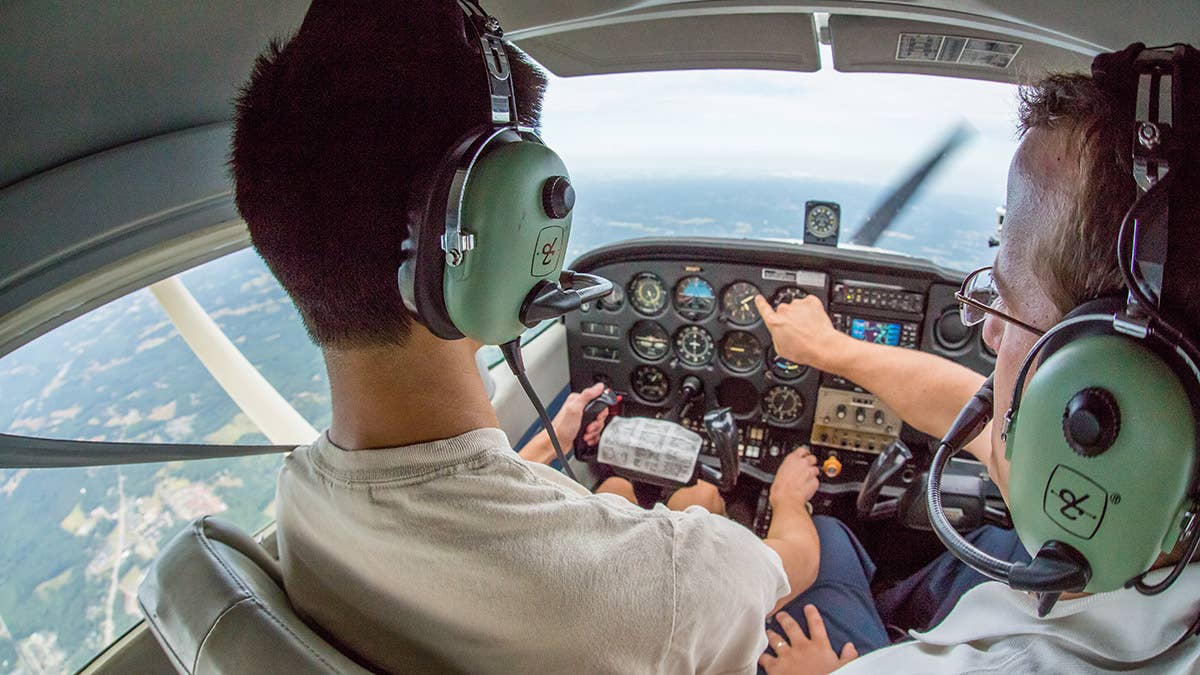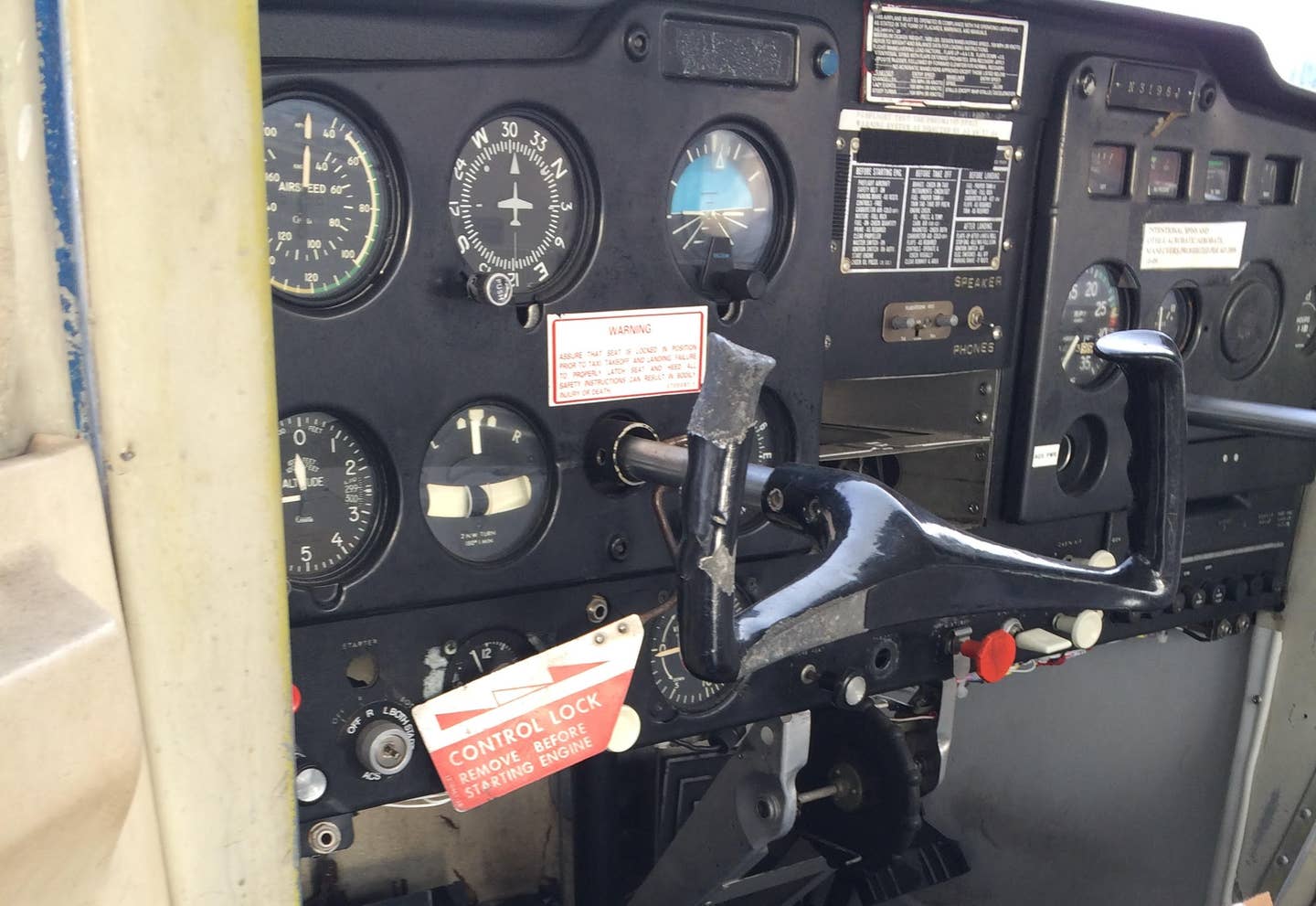Flying with an Athletic Mindset
Learning to fly is a lot like learning to play a sport, where you start with the fundamentals.

Learning to fly is a lot like learning to play a sport. You begin by learning the fundamentals. [Credit: Derek Eckenroth]
One of the laws of learning is that it requires repetition, drill, and a lot of practice. It takes as much time as it takes to learn a maneuver, and more time and practice to gain proficiency, yet there are some student pilots and CFIs who resist repetition, insisting that the maneuver has been learned and can be flown to standard after one lesson.
This is dubious at best, and can be an example of the Dunning-Kruger effect, a cognitive bias where people with limited competence in a particular domain—like flying—overestimate their abilities. It is particularly common with someone who took lessons in the past then returns to it decades later. It can be difficult to accept the fact there is some rust on those skills.
In this way, aviation is very similar to athletics. While you lettered in (insert sport you played in high school or college) some time ago, it probably wouldn't be realistic to expect that same level of performance today.
Poor performance in sports can be embarrassing and ego and body bruising, but rarely are the failures as high stakes as they are in aviation.
Similar Learning Process
Learning to fly is a lot like learning to play a sport. You begin by learning the fundamentals. In flying, you learn how to taxi, use the rudder pedals and throttle, and how to move the yoke or stick. In sports, you learn how to hold the bat, throw the ball, etc. With both activities most of us are clumsy at first, but with practice, repetition, and drill, you get better. Both athletics and flying take a good bit of hand-eye coordination, and you may find rekindling your playing of the sport improves your cockpit performance.
The role of the coach is similar to that of the flight instructor. If they are good at their job, you will remember what they taught you, even many years later. While it may have been awhile since you played, as life got in the way, expect there to be rust. But, if you were taught well, the skills will come back, provided you practice, and if necessary, are prepared to relearn things.
The athletics analogy is particularly poignant because I have just returned from playing in a field hockey tournament in British Columbia, Canada. For the unfamiliar, field hockey is a cross between soccer and lacrosse. I learned to play in high school but had to drop it after college.
It is very much an East Coast sport, so I was excited when I found a team to play with in Seattle. I am a goalkeeper for the Seattle Women's team, and I returned to field hockey just before the COVID-19 pandemic hit. And like a pilot who has not flown in years, there was a learning curve.
For starters, the equipment had changed significantly. The sticks are now composite, not wood, and the goalkeepers wear a lot more protective gear. Back in the day, I relied on a mouthguard, a padded glove, and a high pain tolerance in case the kickers and leg guards made of canvas and cotton batting around bamboo didn't do the job. Today, goalies wear padded pants, kickers, leg guards, and hand protection made of nylon, rubber, and plastic. In addition, I have a helmet, throat guard, and body armor. When I saw the updated gear, I felt a bit like a pilot who learned to fly on steam gauges with a magnetic compass and an ADF for navigation who was now facing a Garmin avionics suite.
It had been so long since I played field hockey that I had to watch videos to relearn how to put on the gear and move in the goal cage. Kick and clear, shuffle, drop into the protective stance, etc. These are the basic moves, like climb, turns, and descents in aviation.
At practice, our coach leads the team through drills that benefit both the offense and defense. These are basically scenarios we will face in a game. It is not unlike pilots practicing steep turns, slow flight, traffic patterns, stalls, and emergency descents—things we could use on every flight.
Like flying, field hockey has a certain amount of risk: That ball hurts when it hits you, even with the protective gear. Some of those women players—like that gusting crosswind—are downright intimidating when they charge the goal cage. A few times I have been tempted to ask, "Do the Valkyries know you took the day off?"
I am supposed to stop the ball and clear it from the defense area with the kickers, my stick, or the mitt on my left hand. I have to read the situation, just like a pilot needs to when they are coming in for a landing—do I add power or flaps, or leave it be? If I lose situational awareness (where did that ball go?) or when there is a pileup in the cage (and we have them, trust me), someone—most likely me—might get hurt.
The only way to lessen the risk is more practice and drill so we are prepared as a team for any situation. It is sort of our version of knowing when to go around.
I find it useful to watch field hockey training videos before practice, just as I watch and recommend my learners view aviation training videos of the maneuvers we will be flying. This is particularly helpful for the learners who haven't been in an airplane for months or even years.
Preseason Training for the Pilot
If you are returning to flying after a long hiatus, it may be useful to approach it like an athlete returning after the offseason. Here are some tips:
- Make the time to watch an online ground school that covers the basic maneuvers, procedures, and knowledge you will need to be a safe and effective pilot. There are several to choose from: Gold Seal, King, and Sporty's to name a few. Find one you like and commit.
- Pay attention to the procedures for the maneuvers. A good majority of the physical skills we learn are acquired in part by watching someone else demonstrate it. At least it gives you an idea, then you supplement this knowledge by reading the pilot's operating handbook (POH) for the aircraft so you have an idea of the metrics for takeoffs and landings, such as the appropriate speeds. Emergency procedures are also in there and should be memorized so you act rather than react in an emergent situation.
- Choose your instructor carefully. Find someone who loves aviation as much as you do and wants you to return to the sky rather than pad their logbook.
- Be patient with yourself. Don’t be afraid to make mistakes in the cockpit—but learn from them.

Subscribe to Our Newsletter
Get the latest FLYING stories delivered directly to your inbox






